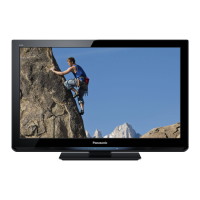
Do you have a question about the Panasonic Viera TX-L32U3B and is the answer not in the manual?
Details on the built-in digital terrestrial tuners for receiving broadcasts.
Explains the benefits of using HDMI for high-definition picture and sound quality.
Information on connecting and controlling external equipment via VIERA Link and Q-Link.
Overview of using SD Card viewer for photos, videos, and music.
Features for owner identification and audio description for accessibility.
Guidance on the transition to digital terrestrial broadcasts in the UK.
Critical warnings and instructions for safe handling and use of the TV's mains plug and lead.
Details on the fused mains plug, fuse replacement, and wiring safety instructions.
Precautions to prevent electrical shock, fire, damage, or injury from improper TV use.
Warning about small parts posing a choking hazard to children.
Guidance on ensuring proper ventilation and safe methods for moving the TV.
Advice on unplugging for long periods and warnings about excessive headphone volume.
List of items supplied as standard with the TV, such as remote and batteries.
Information on recommended optional accessories like wall-hanging brackets.
Step-by-step guide for safely installing and removing batteries from the remote control.
Important safety warnings regarding the safe use and non-modification of the TV pedestal.
Cautions for secure tightening of screws and safe assembly of the TV pedestal.
Comprehensive explanation of each button on the TV's remote control and its function.
Identification of TV ports (CI, SD Card, Headphones) and the Power/Timer LED.
Instructions on using the remote control with the TV's on-screen menus.
Explanation of the TV's automatic standby feature to save power.
Diagrams and steps for connecting an aerial for terrestrial TV reception.
Instructions for connecting DVD recorders or VCRs using AV or SCART terminals.
Diagrams for connecting multiple external devices like recorders and satellite receivers.
Steps to power on the TV and select the country for initial setup.
Guidance on entering an Owner ID for personal security and identification.
Step-by-step instructions for entering PIN and personal details for Owner ID.
Guide to choosing between 'Home' and 'Shop' environments for TV setup.
Instructions for powering on the TV and choosing between DVB or Analogue modes.
Ways to select channels using direct input, information banner, or TV Guide.
How to utilize the information banner for channel details and selection.
Guide to using the Electronic Programme Guide for channel browsing and selection.
Explanation of the information banner's content and its available features.
Meanings of various feature indicators and messages displayed on the screen.
How to quickly switch back to the previously viewed channel or input source.
How to freeze or unfreeze the TV picture using the Hold button.
Guide to checking and changing settings like Audio Description and Subtitle Language.
Instructions for programming the TV to turn off automatically after a set period.
How to adjust the TV screen's aspect ratio for optimal image display.
Instructions for managing subtitle display for DVB and Analogue modes.
How to choose between DVB or Analogue modes within the TV Guide interface.
Steps to access, browse, and view programme listings in the TV Guide.
Instructions for selecting and viewing programmes directly from the TV Guide.
How to view detailed programme information and organized channel lists.
Methods for searching programmes by type or title within the DVB mode.
Guide to setting reminders or recordings for programmes using the timer function.
Explanation of how Guide link programming automatically adjusts timer events.
Instructions for viewing advertisements and updating related information.
Guide to accessing and using digital teletext services.
Instructions on using remote control buttons to operate teletext services.
Explanation of analogue teletext services and modes like FASTEXT and List.
Steps for changing teletext modes, selecting pages, and adjusting contrast.
Functions for expanding teletext pages and revealing hidden information.
How to freeze a teletext page to prevent automatic updates.
Accessing the teletext index and viewing favourite subtitle pages.
How to view TV and teletext simultaneously and store frequently viewed pages.
Instructions for viewing sub-pages and watching TV during teletext updates.
Steps to turn on the TV and select the correct input source for external equipment.
Guide to accessing the input selection menu and viewing the selected input.
How to operate connected Panasonic equipment using the TV remote control.
Procedure for changing remote control codes to match different equipment types.
How to display and select features within the VIERA TOOLS menu.
Guide on using features like VIERA Link Control, Photo, Video, and Music.
Steps to display, select, and adjust settings within the TV's main menu.
Guide on using navigation elements like slide bars and free input for menu settings.
Choosing picture modes like Dynamic, Normal, Cinema, True Cinema, or Game.
Adjusting settings for contrast, brightness, colour, sharpness, and noise reduction.
Settings for screen display, oversizing, and enhancing picture resolution.
Options for DVI input settings and resetting picture settings to defaults.
Selecting sound modes (Music, Speech, User) and adjusting equalizer settings.
Adjusting headphone volume, speaker balance, and surround sound effects.
Configuring SPDIF selection, PCM optical level, and HDMI input audio settings.
Settings for audio description and resetting sound preferences.
Setting timers for programmes and configuring TV Guide display options.
Managing energy saving modes and VIERA Link settings for connected devices.
Controlling power saving features for the TV and connected equipment in standby mode.
Setting up child lock for channels/inputs and parental rating restrictions.
Procedures for automatic and manual tuning of DVB and Analogue channels.
Settings for preferred teletext language, character set, and subtitles.
Labelling inputs, skipping terminals, and setting information banner display duration.
Configuring network settings for internet connectivity.
Resetting TV to factory defaults and managing Owner ID information.
Downloading software updates and using Common Interface modules.
Customizing power on behaviour and setting auto standby timers.
Visual guide to the Picture and Sound menu hierarchies and available settings.
Visual guide to the Setup menu, covering tuning, child lock, system, and network settings.
Configuring TV Guide options and child lock features.
Procedures for manually tuning channels and performing auto setup for DVB and Analogue.
Customizing display settings like teletext, subtitles, and labeling input terminals.
Step-by-step guide for automatically retuning all channels through the setup menu.
How to choose between DVB or Analogue mode for the retuning process.
Steps to navigate the menu to reach the DVB or Analogue Tuning Menus.
How to start the automatic channel search and setup process.
How to select DVB mode to access tuning and editing functions.
Navigating to the Setup and DVB Tuning Menus for channel management.
How to sort DVB channels based on signal quality or preferred region.
Procedure for manually tuning DVB channels by adjusting frequency and searching.
Steps to create and manage favourite channel lists for DVB channels.
How to check the signal quality and strength for DVB reception.
How to hide, reveal, or edit unwanted DVB channels in the Channel List.
Procedure for automatically updating the DVB channel list.
Steps for selecting Analogue mode and accessing tuning menus for channel management.
How to hide, reveal, or edit unwanted Analogue channels in the Channel List.
Procedure for manually tuning Analogue channels and making fine adjustments.
Steps to access the Timer Programming menu from the Setup menu.
How to choose tuner mode and set timer events for reminders or recordings.
Step-by-step guide to set channel, date, time, and function for timer events.
How to change, record with subtitles, or cancel timer programming events.
How to use Child Lock to restrict access to channels and inputs.
Steps for entering PIN, managing the Child Lock list, and locking channels.
Procedure for changing the PIN number and setting parental rating restrictions.
How to label input terminals for easier identification and selection.
Using the on-screen keyboard to assign custom names to input modes.
Instructions for connecting the TV to broadband network devices.
Guide to accessing and initiating the network setup configuration.
Steps for network connection, including IP/DNS settings and proxy configuration.
Methods for updating the TV's software via the internet.
Procedure to reset all TV settings to their original factory defaults.
Steps to check messages and confirm the reset process.
Guide to entering PIN and personal details for owner identification.
How to view stored Owner ID information and change the PIN number.
Instructions for safely inserting a CI module and related precautions.
Guide to operating services and accessing encrypted channels via the CI module.
How to enable automatic software updates for the TV.
Steps to perform an immediate search and download for software updates.
Instructions for correctly inserting and removing SD cards from the TV.
Steps to launch the Media Player and choose content type (Photo, Video, Music).
How to view photos, including thumbnail display and file information.
Options to sort photos for easier browsing and selection.
Displaying photos individually with options for operation guide and background music.
How to start slideshows and configure settings like frame, colour, and transitions.
Adjusting settings for photo mode, including slideshow and colour effects.
Detailed settings for slideshows, including transition effects, aspect, and background music.
How to switch between Photo, Video, and Music modes within the Media Player.
How to view video files, including title and scene selection, and display information.
Using playback controls like pause, rewind, fast forward, and aspect adjustment for videos.
Adjusting video settings such as preview, repeat, multi-audio, and aspect change.
How to configure audio output for multi-channel sound via amplifier.
How to play music files, including folder and file playback from SD cards.
Adjusting settings specific to music mode, such as playback repeat options.
Overview of features for controlling connected devices using Q-Link and VIERA Link.
Details on SCART-based Q-Link connections and available features.
Information on connecting devices via HDMI and SCART for VIERA Link functionality.
Details on HDMI and audio connections for VIERA Link functionality.
Information on compatible equipment for VIERA Link Control and connection limits.
Steps for Q-Link setup and details on available features like analogue channel download.
How to record the current programme directly to a DVD Recorder/VCR.
How the TV and connected equipment synchronize power on/off and standby modes.
Information on HDAVI Control features for enhanced HDMI interoperability.
Steps required to connect and set up equipment for VIERA Link.
Details on features like analogue channel download and easy playback for VIERA Link.
How to reduce power consumption of connected equipment in standby mode.
Automatically puts unused equipment into standby to save power.
Steps to start recording the current programme directly to a DIGA Recorder.
How to pause live TV and resume later, with recording to DIGA Recorder HDD.
Using the TV remote to control menus of connected equipment via VIERA Link.
How to choose the type of connected equipment to access its menu.
Using the TV remote to operate the accessed equipment's menu.
How to select between Home Cinema or TV speakers using the TV remote.
Guide to connecting amplifiers for multi-channel audio output.
Table showing recommended connections for various equipment to TV terminals.
Recommendations for connecting VCRs/DVD Recorders for recording or playback.
Recommendations for connecting HD Satellite receivers for viewing broadcasts.
Diagrams for connecting DVD players and other HDMI equipment.
Connection diagrams for camcorders, game consoles, and amplifiers for speaker systems.
Information on connecting headphones and adjusting their volume.
How the TV automatically selects the optimum size and aspect ratio for images.
Explanation of how Widescreen or Control signals influence aspect ratio switching.
How auto mode determines the best aspect ratio using WSS, control signals, and detection.
Information on SD Card formats, types, capacities, and crucial usage precautions.
List of supported file formats for Photo, Video, and Music playback in the Media Player.
Table showing characters accessible via numeric buttons for free input items.
Explanation of the HDMI interface for digital AV connection and its benefits.
Instructions for connecting equipment with DVI output using an HDMI adaptor cable.
Table listing compatible input signals for COMPONENT and HDMI terminals.
Detailed pinout diagrams for SCART and HDMI terminals, showing connection points.
Steps to resolve block noise, frozen images, and channel tuning failures.
Troubleshooting steps when the TV displays no image or produces no sound.
Steps for resolving picture quality problems, network connection failures, and remote control issues.
Steps to fix chaotic, noisy, blurry, or distorted images and sound issues.
Steps to resolve issues related to no sound, low volume, or distorted audio.
Steps to fix issues with TV not switching on, unexpected standby, and remote control malfunctions.
Information on normal heat, panel flexibility, and pixel characteristics.
Interpreting messages related to tuning, signal strength, and channel lock.
Understanding messages for feature availability, software updates, and system time.
Interpreting messages related to new channels, no channels found, and module status.
Understanding messages for recording failures, no signal, and incorrect PIN entries.
Information on timer programming status, software update results, and overlap warnings.
Understanding messages related to unreadable files, missing SD cards, or playback errors.
Interpreting messages related to Ethernet cable connection status.
Instructions for cleaning the TV's exterior surfaces safely and effectively.
Guidance on cleaning the mains plug to prevent electrical hazards.
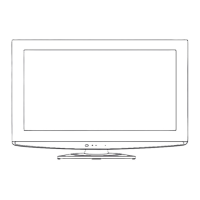
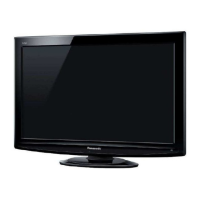
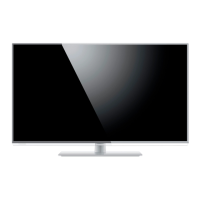
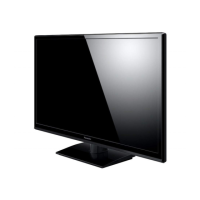


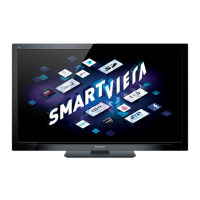

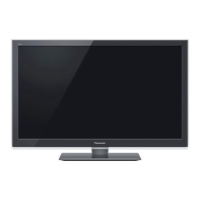
